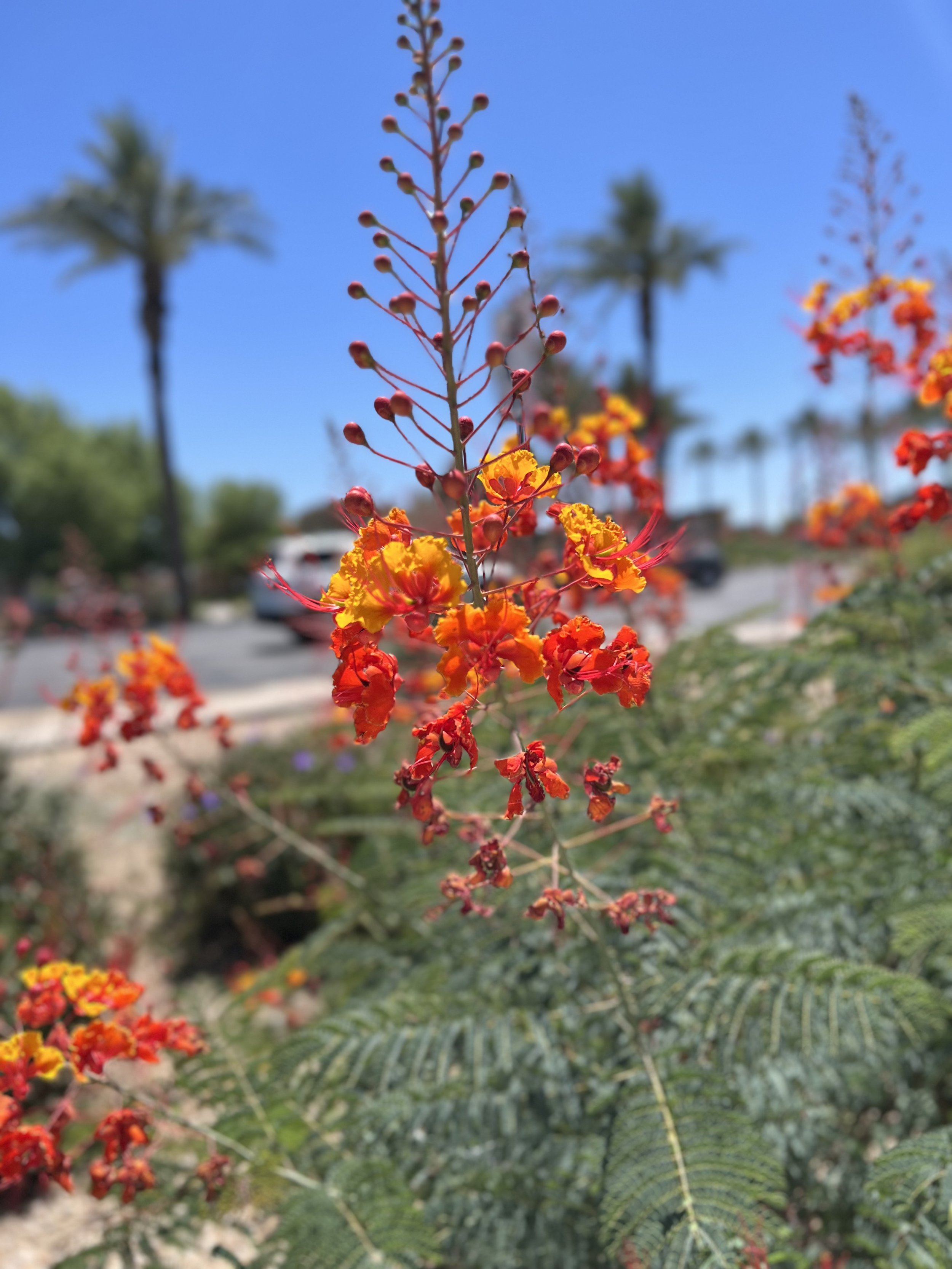Peacock Flower
All around our valley, along roadsides, in parking lots, in public gathering places, one is sure to see our vibrant Peacock Flower; also known as Red Bird of Paradise, Flowerfence, Dwarf Poinciana, Mexican Bird of Paradise…
This shrub and or tree, is the pride of Barbados; their national flower.
A peacock flower is a striking, ornamental plant commonly grown in public and private gardens. Great for a clustered look in large gardens and courtyards; it’s prized for its bright, colorful blooms and low maintenance requirements.
Native to the tropics and subtropics of the Americas, the seeds are toxic to dogs and cats; An ancient tale claims enslaved Africans would eat the fruit to abort their babies, so they wouldn’t bring them into slavery.
The fruits are edible and draw butterflies and bees.
Obtaining its name Peacock, due to the way it is displayed while in bloom, almost as if it is flaunting its beauty.
It’s perennial, can be both a shrub or a tree blooming mid-late spring and again summer and fall; displaying a barrage of flowers, yellow, red orange and gold- ALL AT THE SAME TIME. The tiny leaves are green and the stems are red, yellow green and purple.
It gets large- 10 feet tall and may spread up to 13 feet.
Super easy to care for with resistance to most pests and diseases here in the southwest, although you may see our pesty whiteflies hover around, but they don’t hurt the plant. It’s perfect for those newbies to the valley or those with brown thumbs.
It tolerates dryness. It thrives in full to partial sun
This plant will live in sandy/limey, chalky clay both acidic or alkaline, so no worries when planting in the valley soil.
An economical plant as no watering necessary in the winter/nor fertilizing, etc. although I do feed mine with nitrogen, potassium and phosphorus from time to time.
Drought tolerant so good for those of us that leave for the summer! We leave the plant on a drip system, but it isn’t absolutely necessary.
You can shape the plant if you’d like or let it go wild.
Just plant it once and let it go.
It’s just lovely to look at with its’ robust, natural beauty.
Folklore claims the flower was a fairy but after going to earth she could not bear seeing villagers dying due to lack of money to cure their diseases. She worked hard and eventually dies turning into this flowering plant so she could impress people through her sturdiness, beauty and ease, while attracting butterflies, to make people feel better.
The symbolism of this plant is escapism
Photos are my own


